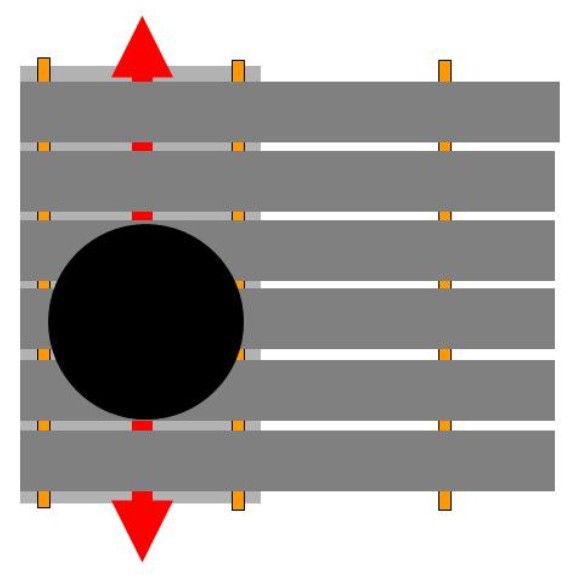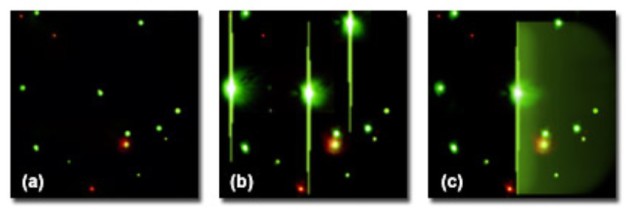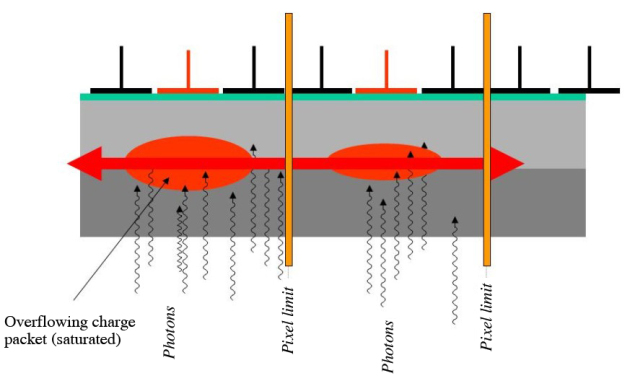Blooming
A pixel is saturated when its Full Well Capacity (FWC) is reached. When a potential well is filled, the excess charge can overflow into the neighbour wells of adjacent pixels. Two types of blooming can be distinguished according to the directionality of the overflow. These overflows can of course be avoided by never reaching the saturation of the FWC, hence by working with short exposure times... which is not always very practical for all or part of the image.
This is particularly true in the case of scenes that have highly heterogeneous illumination (high-contrast objects, flames, explosions, galaxies, night lightings, ...).
Horizontal blooming
In this case, the charge overflow happens in the adjacent columns. To avoid it, only the drains relative to each pixel or each column can avoid the collection in neighbour charges. For interline transfer systems, this process is called Vertical Overflow Drain (VOD), in orange on the figure 17.
Remarque :
However, it can be noted again that their presence makes the architecture more complex, but also reduces the fill factor. The efficient surface decreases because the generated charge by the light on the drain will be directly eliminated.
Vertical blooming – Smear
In some cases, the exposure of sensors can persist during the transfer along the column. In that case, if the full well capacity is exceeded, the charges will flow during their transfer, generating vertical lines, called “smear”. (Fig. 18)

Remarque :
The only way to fight actively against this overflow is to reduce the exposure time or to choose an other architecture, at the expense of the fill factor.

